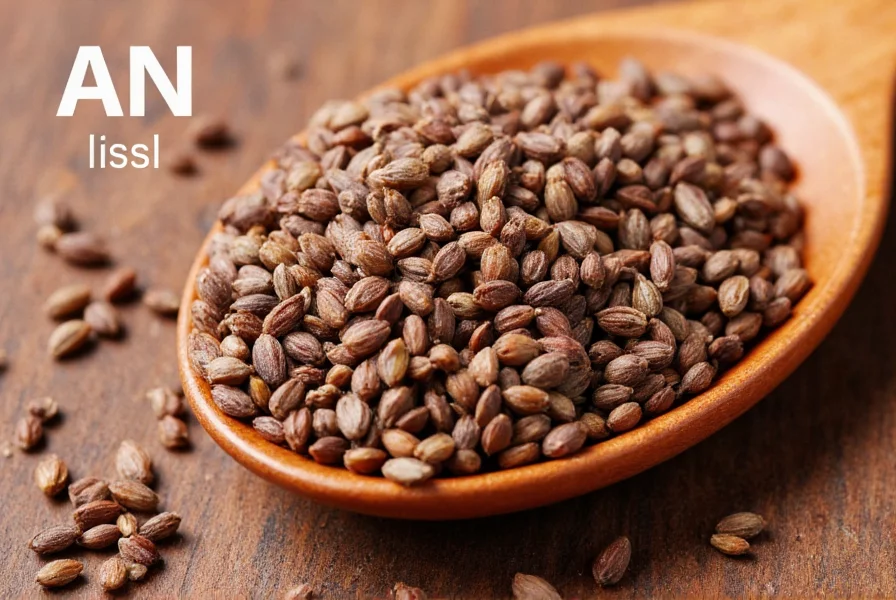Understanding how to pronounce anise correctly matters whether you’re discussing culinary ingredients, herbal remedies, or botanical terms. This small but significant distinction prevents confusion in professional kitchens, apothecaries, and gardening circles where precise communication is essential.
Breaking Down Anise Pronunciation
The word “anise” contains two syllables with clear stress patterns that follow English phonetic rules:
| Syllable | Phonetic Spelling (IPA) | Sound Description | Common Reference Word |
|---|---|---|---|
| First (stressed) | /ˈæn/ | Short “a” as in “pan” | ant |
| Second (unstressed) | /ɪs/ | Short “i” as in “sit” | is |
When saying “anise” correctly, emphasize the first syllable strongly: AN-iss. The second syllable should be short and crisp, not drawn out. Many people incorrectly place stress on the second syllable (uh-NEEZ), which actually describes the pronunciation of “aniseed” in certain regional dialects.

Why Anise Pronunciation Causes Confusion
The confusion around how to pronounce anise stems from several linguistic factors that affect English speakers worldwide. Understanding these helps cement the correct pronunciation in your memory.
Etymological Roots
Anise traces back to the Greek word “anison,” which evolved through Latin (“anisum”) and Old French (“anis”) before entering Middle English. This historical journey explains why the spelling doesn’t perfectly match modern pronunciation patterns. The silent “e” at the end follows a common English convention where final “e” modifies the preceding vowel but remains unpronounced.
Anise vs. Aniseed: Clearing the Confusion
Many pronunciation errors occur because people confuse “anise” with “aniseed”:
- Anise (the plant): AN-iss – refers to the herb itself
- Aniseed (the seed): uh-NEEZ or AN-iss-id – specifically refers to the seeds
In American English, “anise” serves as both the plant name and seed reference, pronounced AN-iss. British English sometimes distinguishes them more clearly, with “aniseed” pronounced uh-NEEZ. This regional variation contributes significantly to the widespread confusion about how to pronounce anise properly.
Practical Usage Examples
Hearing the word in context helps internalize correct pronunciation. Consider these examples from culinary and botanical contexts:
- “The recipe calls for one teaspoon of ground AN-iss to complement the citrus flavors.”
- “Bakers often confuse fennel and AN-iss, though their flavors differ significantly.”
- “This Mediterranean garden features several aromatic herbs including basil, thyme, and AN-iss.”
- “The distinctive licorice-like flavor of AN-iss makes it popular in both sweet and savory dishes.”

Regional Pronunciation Variations
While AN-iss represents the standard pronunciation in dictionaries and professional settings, regional accents create natural variations:
- American English: Consistently AN-iss for both plant and seeds
- British English: Sometimes distinguishes between AN-iss (plant) and uh-NEEZ (seeds)
- Australian English: Generally follows British patterns but with flatter vowel sounds
- Non-native speakers: Often add extra syllables or misplace stress due to spelling confusion
Professional chefs, herbalists, and botanists worldwide recognize AN-iss as the standard pronunciation regardless of regional variations. When precision matters—such as in culinary schools or botanical gardens—using the correct AN-iss pronunciation demonstrates attention to detail and professional knowledge.
Common Mispronunciations to Avoid
Several incorrect pronunciations of anise persist due to spelling confusion and regional influences:
- AH-neeze – Incorrectly emphasizing the second syllable with a long “e” sound
- uh-NYEZ – Adding French-inspired vowel sounds not present in standard English
- AN-eez – Over-pronouncing the final “e” which should be silent
- AY-niss – Using a long “a” sound instead of the short vowel
These mispronunciations often stem from applying pronunciation rules from similar-looking words like “mercy” or “notice.” Remember that English spelling doesn’t always follow consistent patterns, and anise follows its own specific phonetic rules.
Mastering Anise Pronunciation in Conversation
Developing confidence in saying anise correctly involves more than just knowing the right sounds—it requires practice in real contexts. Try these techniques to make the correct pronunciation feel natural:
- Minimal pair practice: Repeat “pan is” followed immediately by “anise” to lock in the AN-iss sound
- Sentence repetition: Read aloud sentences containing “anise” with proper stress patterns
- Recording yourself: Compare your pronunciation against dictionary audio references
- Contextual usage: Practice using the word in cooking conversations or botanical discussions
Within just a few days of consistent practice, saying AN-iss will feel natural and automatic. The key is recognizing that the final “e” modifies the vowel sound but remains silent—a common pattern in English words like “notice” and “mercy.”











 浙公网安备
33010002000092号
浙公网安备
33010002000092号 浙B2-20120091-4
浙B2-20120091-4